Soundlab Audiophile G9-7c: a 30-year odyssey fulfilled
- Thread starter godofwealth
- Start date
You are using an out of date browser. It may not display this or other websites correctly.
You should upgrade or use an alternative browser.
You should upgrade or use an alternative browser.
Oxford’s academic rival has always been University of Cambridge, the two representing the Crown Jewels of Great Britain. The worth of these universities is incalculable. Isaac Newton was the Lucasian Professor of Mathematics at Cambridge. Without Newton’s laws or his invention of calculus, the world’s economies would grind to a halt in a millisecond. Darwin studied here as a student, hoping to become a priest. He became instead the greatest biologist in history with his discovery of evolution by natural selection. The DNA double helix structure was discovered here by Crick and Watson opening the door to countless innovations in medicine. Alan Turing who invented the modern computer, also called Turing’s machine, taught at Cambridge. He also saved western civilization by cracking the Enigma code in the Second World War.
We are listening to Choir of King’s College, Cambridge, in a magnificent performance of choral music beginning with Claudio Monteverdi’s scintillating Cantate Domino. King’s College choir was founded, appropriately enough, by the 19-year-old King Henry VI in 1441. It has remained a bastion of religious scholarship and worship for almost 600 years. That history shows in this brilliant 24-bit 96khz recording featuring the angelic voices of its boys choir. According to the King’s decree, the choir was supposed to include six “singing boys” and 16 choristers who were “poor boys of a strong constitution and a honest conversation”. I love the way Kings wrote such decrees 600 years ago!
Today, the choristers are selected from the 420 students at King’s College School, across the river from King’s College, now featuring 420 girls and boys. The men in the choir are of course required to be undergraduate students at the University of Cambridge. You have to be brilliant and have a great singing voice to be in this choir. It must be daunting to sing in a chapel that’s 600 years old. Having seen it in person, I can attest to its architectural magnificence. There’s nothing like it in the US.
This recording will teach you a lot about midrange coloration in your system. It should sound entirely natural with not a hint of midrange brightness, even as the high treble of the young boys voices soars in the chapel. A desert island disc.
View attachment 145390
A great recording - the realism of the choir is really outstanding. Researching on the recording I found that the sound engineer is Jonathan Allen , https://www.jonathanallenrecording.com/ well known for his work at Abbey Road and in the soundtrack of Starwars I. I now intend to listen to few more of his recordings.
Listening to the magnificent voice of Andrea Bocelli on this elegant sampler of his popular songs. I once spent a year sabbatical from my university teaching job at the famous IBM T.J. Watson Research Center. I drove to and fro each week from my university in New England to the beautiful Hudson Valley, NY, campus where IBM’s research center was housed. This album was on a CD in my car and I played it endlessly, singing along. The recording is a bit bright and probably equalized to make it sound good on a boombox. But the voice and melodies are captivating. Bocelli’s voice infuses each song with an incredible passion, and he sings his heart out. He is of course visually impaired and I always wondered if his lack of eyesight gave him that extra degree of emotional strength to sing as he does. He’s an amazing artist and fully deserves his incredible popularity in Italy and around the world.


Listening to three great jazz legends recorded live at the famous Blue Note Cafe in NYC, a DSD recording by Telarc. They may be past their prime, but they sure know to groove. The recording is of course a significant step up from the average jazz recording, even though it’s closely miked. The audience is clearly have a great time. On the big SL’s, the instruments have a rich tonality. Milt’s vibraphone of course is the star of the show. Ray Brown plays a mean double bass. Oscar Peterson has of course been affected by his stroke but he’s clearly inspired by his colleagues. Great album.
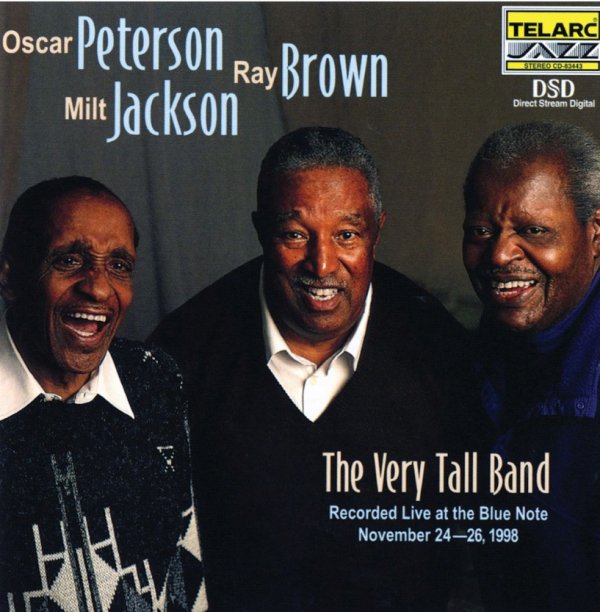

You should never judge a book by its cover, as the saying goes. In audiophile settings, this means the famous “law” first enunciated by J. Gordon Holt:
“the quality of a musical performance in an album
Is inversely proportional to its recording quality”.
Great insight from the founder of Stereophile whose wisdom I miss. I thought of JGH in listening to this fabulous album by Gerry Mulligan with trumpeter Art Farmer recorded in the late 1950s. Musically it’s a blockbuster. It’s incredibly dynamic reminding me of vinyl mono, which remains for me the best musical source still for jazz. This recording has hair-raising dynamics. But taken in audiophile terms, it’s not a great recording. But who really cares? I’ve heard so many audiophile recordings that put me to sleep (don’t get me started on Ana Caram or even Diana Krall — I’ll take a mono album by Sarah Vaughan any day of the week compared to these two). This great recording has Mulligan and Farmer come out with their “guns” blazing, each daring the other to new heights.
On the big SL’s, you hear the harshness in the recording, of course, but the sheer joy in music making on display here wins you over. It’s like hearing Bob Dylan singing. No, he’s no Taylor Swift, but personally I’ll take Dylan’s deep lyrics any day of the week over Ms. Swift. There’s a reason he won the Nobel Prize in literature and then blew off the committee and didn’t show up to accept the prize except when he felt like it. That’s genius. Gerry Mulligan has that rare quality of genius. Musicians of this caliber can be enjoyed on a boombox. If you have soul in your music, you don’t need a high end system to dig it.
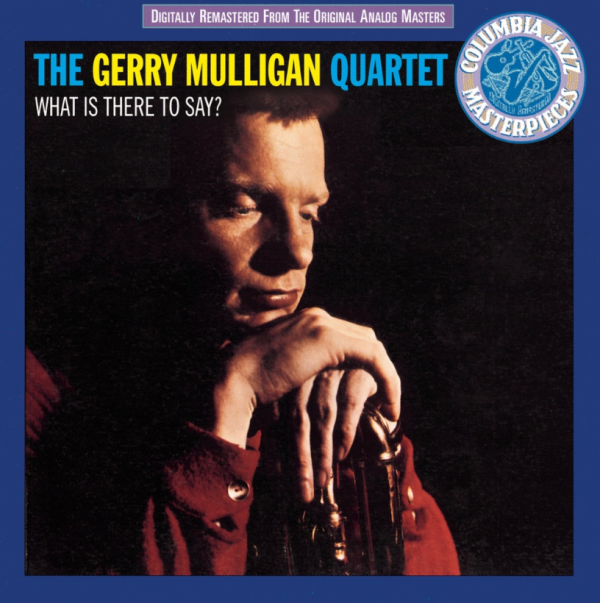
“the quality of a musical performance in an album
Is inversely proportional to its recording quality”.
Great insight from the founder of Stereophile whose wisdom I miss. I thought of JGH in listening to this fabulous album by Gerry Mulligan with trumpeter Art Farmer recorded in the late 1950s. Musically it’s a blockbuster. It’s incredibly dynamic reminding me of vinyl mono, which remains for me the best musical source still for jazz. This recording has hair-raising dynamics. But taken in audiophile terms, it’s not a great recording. But who really cares? I’ve heard so many audiophile recordings that put me to sleep (don’t get me started on Ana Caram or even Diana Krall — I’ll take a mono album by Sarah Vaughan any day of the week compared to these two). This great recording has Mulligan and Farmer come out with their “guns” blazing, each daring the other to new heights.
On the big SL’s, you hear the harshness in the recording, of course, but the sheer joy in music making on display here wins you over. It’s like hearing Bob Dylan singing. No, he’s no Taylor Swift, but personally I’ll take Dylan’s deep lyrics any day of the week over Ms. Swift. There’s a reason he won the Nobel Prize in literature and then blew off the committee and didn’t show up to accept the prize except when he felt like it. That’s genius. Gerry Mulligan has that rare quality of genius. Musicians of this caliber can be enjoyed on a boombox. If you have soul in your music, you don’t need a high end system to dig it.

We are listening to a great compilation album of Ben Webster called “The Soul of Ben Webster”. My favorite Ben Webster albums are on vinyl mono. Nothing in digital can touch the sound of vinyl mono. But that said, this is a lovely album all the same. It certainly has soul. What does that mean, really? Well, for one these musicians just play their hearts out. In the late 1950s, they’re not earning the billion dollar paychecks of the ultra suave Taylor Swift Eras publicity machine with its laser 3D snakes and other nonsense. These guys are making music. We in the 21st century seem to have lost the sense of what music means. It feels like if a musician doesn’t put out a gaudy light show, they’re not making music. These guys don’t need the billion dollar publicity machine. They have their soul. They make music the old fashioned way by playing their instruments. Ben Webster is the king of the ballad. He can make you swoon with the way he brings a tune home. It drips with melancholy. It’s got depth. It’s got presence. His costars do wonders. Harrry “Sweets” Edison and altoist Johhny Hodges tell you what true jazz was like 70 years ago. No smoke filled arenas, no 3D snakes, no bevy of scantily clad women gyrating about. These guys don’t need that. They have soul.


Just trying to spread the news if anyone is following (so hard to know how and where to announce these things)
Sound Lab (myself and Dr. Vinyl) will be at Dallas SWAF this March 21-23rd to show a newly made (in progress now) G7-7C Majestic in Room 1201.
More details later, but the room is hopefully good as it is larger than normal (20' x 18' and has 9'4" ceilings). Certainly look forward to see you there. I hope you don't mind my sharing this information here. (for those who relate better to old identification this model would have been called a Majestic 745 (basically about 84" tall))
Sound Lab (myself and Dr. Vinyl) will be at Dallas SWAF this March 21-23rd to show a newly made (in progress now) G7-7C Majestic in Room 1201.
More details later, but the room is hopefully good as it is larger than normal (20' x 18' and has 9'4" ceilings). Certainly look forward to see you there. I hope you don't mind my sharing this information here. (for those who relate better to old identification this model would have been called a Majestic 745 (basically about 84" tall))
Just upgraded my Lampizator Pacific DAC with a quartet of rare Western Electric 101D tubes with a WE 274b rectifier. The WE 101d tubes are rated for 40,000 hours of service. Amazing. No idea how long mine will last but they measure like new in my Amplitrex tube tester. The sound is just out of this world. Gorgeous tonality and a sweetness that’s missing from other tubes I’ve heard on my Lampi. We are listening to a beautiful quintet of Franz Anton Hoffmeister recorded in DSD. What’s remarkable about Hoffmeister is that he not only wrote music, but published the music of many famous composers. He’s primarily known for his music publishing business. Here’s a blurb on him from Wikipedia. His music is lovely as is this recording.
Franz Anton Hoffmeister was born in Rottenburg am Neckar, Further Austria, on 12 May 1754. At the age of fourteen, he went to Vienna to study law. Following his studies, however, he decided on a career in music and by the 1780s he had become one of the city’s most popular composers, with an extensive and varied catalogue of works to his credit.
Hoffmeister’s reputation today rests mainly on his activities as a music publisher. By 1785 he had established one of Vienna’s first music publishing businesses, second only to Artaria & Co, which had ventured into the field five years earlier.
Hoffmeister published his own works as well as those of many important composers of the time, including Haydn, Mozart, Beethoven, Clementi, Johann Georg Albrechtsberger, Carl Ditters von Dittersdorf and Johann Baptist Wanhal. These famous composers were also among Hoffmeister's personal friends: Mozart dedicated his String Quartet in D to him and Beethoven addressed him in a letter as my "most beloved brother".
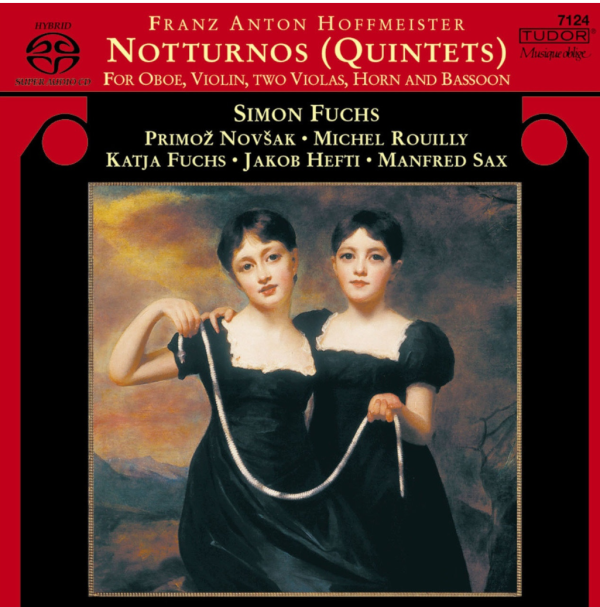
Franz Anton Hoffmeister was born in Rottenburg am Neckar, Further Austria, on 12 May 1754. At the age of fourteen, he went to Vienna to study law. Following his studies, however, he decided on a career in music and by the 1780s he had become one of the city’s most popular composers, with an extensive and varied catalogue of works to his credit.
Hoffmeister’s reputation today rests mainly on his activities as a music publisher. By 1785 he had established one of Vienna’s first music publishing businesses, second only to Artaria & Co, which had ventured into the field five years earlier.
Hoffmeister published his own works as well as those of many important composers of the time, including Haydn, Mozart, Beethoven, Clementi, Johann Georg Albrechtsberger, Carl Ditters von Dittersdorf and Johann Baptist Wanhal. These famous composers were also among Hoffmeister's personal friends: Mozart dedicated his String Quartet in D to him and Beethoven addressed him in a letter as my "most beloved brother".

This is a delightful collection of entertainment music by Telemann, who was a close acquaintance of J.S. Bach. As the name suggests, it was intended as music that’s played as folks sat for dinner or were otherwise just having a good time. Telemann wrote in a pleasing style that was less rigid than Bach’s austere fugues. The recurring is sumptuous even though it’s an original instruments recording, so the violins are brighter than modern instruments.
On the big SL now with the new WE 101D tubes in my Lampizator Pacific, there’s much to enjoy here. This is casual music and is great for a holiday party. It’s bouncy and energetic. The flute sounds really lovely. The instruments are spaced widely apart. There’s a great soundstage on this recording.
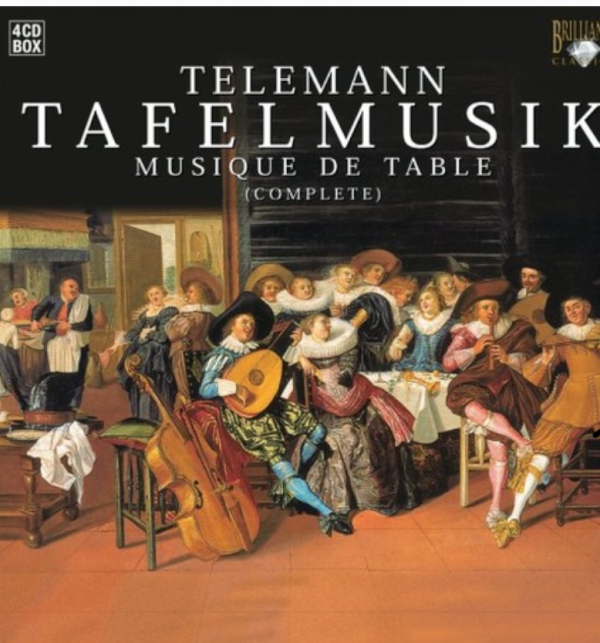
On the big SL now with the new WE 101D tubes in my Lampizator Pacific, there’s much to enjoy here. This is casual music and is great for a holiday party. It’s bouncy and energetic. The flute sounds really lovely. The instruments are spaced widely apart. There’s a great soundstage on this recording.

Chopin remains the undisputed king of classical piano music of a certain salon genre: he used to play in Parisian salons and women would swoon at his lyrical playing (these days, it’s Taylor Swift they swoon over). He dedicated his whole life to one instrument, the piano. He did compose a few pieces for orchestra, like his piano concertos and his cello sonata. But solo piano was at the core of his art. It takes a huge sense of self-confidence to dedicate your life to one idea. I once had the pleasure of a former PhD alum from my university lab who dedicated his whole life to one idea. He achieved remarkable success, getting elected to becoming Fellow of the Royal Society, the world’s most prestigious scientific club that Newton and Darwin belonged to. It’s rare to find anyone so committed to one idea that they’re willing to work for 40 years on it. Chopin dedicated his entire life to the piano.
We are listening to the Complete Works of Chopin played by Garrick Olson recorded by Hyperion. The first album is his Scherzos and Variations. Chopin poured his heart into his compositions. He was not a Beethoven or a Liszt. No showmanship or excessive bravura. Just a deep sense of melody and depth in his music that only comes from someone who thinks of nothing else but playing the piano. It’s a nice recording made in Purchase, New York at a venue I have attended concerts in. Fairly closely miked. I’d have preferred a bit more ambience. But for Chopin, perhaps that’s justified.
I’m reminded of a beautiful documentary I just watched on Netflix called “The Only Girl in the Orchestra”. It’s the true life story of the first woman to play in the New York Philharmonic. She played the double bass. She was a favorite of the famous conductor Leonard Bernstein who said she “was a miracle. Every time I look at her she’s looking back at me with a radiance. Does she know every note of every piece we play?” This short 35 minute documentary has been given many awards and an Oscar nomination. Orin O’Brien was considered the best double bass player in the world. She dedicated her whole life — 55 years! — to playing the double bass for the New York Philharmonic retiring at 87! That’s what it means to dedicate your whole life to one idea. Few of us can manage that.

 www.onlygirlintheorchestra.com
www.onlygirlintheorchestra.com

We are listening to the Complete Works of Chopin played by Garrick Olson recorded by Hyperion. The first album is his Scherzos and Variations. Chopin poured his heart into his compositions. He was not a Beethoven or a Liszt. No showmanship or excessive bravura. Just a deep sense of melody and depth in his music that only comes from someone who thinks of nothing else but playing the piano. It’s a nice recording made in Purchase, New York at a venue I have attended concerts in. Fairly closely miked. I’d have preferred a bit more ambience. But for Chopin, perhaps that’s justified.
I’m reminded of a beautiful documentary I just watched on Netflix called “The Only Girl in the Orchestra”. It’s the true life story of the first woman to play in the New York Philharmonic. She played the double bass. She was a favorite of the famous conductor Leonard Bernstein who said she “was a miracle. Every time I look at her she’s looking back at me with a radiance. Does she know every note of every piece we play?” This short 35 minute documentary has been given many awards and an Oscar nomination. Orin O’Brien was considered the best double bass player in the world. She dedicated her whole life — 55 years! — to playing the double bass for the New York Philharmonic retiring at 87! That’s what it means to dedicate your whole life to one idea. Few of us can manage that.

THE ONLY GIRL IN THE ORCHESTRA
87-year-old Orin O’Brien never wanted the spotlight, but by being the first woman hired to the New York Philharmonic, it was inevitable.

The last couple of days, I’ve been reveling in the sound of my Lampizator Pacific DAC equipped with a quartet of ultra rare Western Electric 101D tubes produced almost 100 years ago. These tubes are rated for 40,000 hours. They are the Stradivarius of tubes. No modern manufacturer can build tubes today that lasts this long. And they sound gorgeous, taking the rest of system - ARC 6SE and the dragon ARC 750SE’s driving my SL G9-7c’s to new heights. We are listening to the beautiful jazz of Jimmy Giuffre whose trio features a guitar, a bass and his clarinet, but no drum percussion. Giuffre’s clarinet has this smoky sound that’s alluring. The whole album is so much more enjoyable now with the WE 101d tubes. I’ll have to relisten to all my old favorites. I like Giuffre. He has an intellectuals thoughtful way to play jazz that appeals to my mathematical mind. No slam bang crunch that marks a jazz recording including Duke Ellington. This is not big band jazz. It’s far more cerebral. It’s a thinking man’s jazz trio.


Today we are listening to the piano music of Alexander Scriabin, a Russian composer greatly influenced by Chopin who also dedicated his life to this instrument. Thanks to the dedication of pianist Maria Lettberg, we can listen to all 8:30 hours of Scriabin’s piano music recorded on 8 compact discs for Cappricioso but available on Roon through Qobuz. Scriabin was born in Moscow in 1871, and a child prodigy who built his own pianos. He had great teachers in the Moscow Conservatory but his relatively small hands compared to Rachmaninov meant he was never going to be a super pianist (just like a mere six footer is not going to a great NBA star like the seven footers).
Scriabin spent a lot of years in Europe, including Paris and Brussels, and even a short stint in New York City. He eventually returned to Moscow and died young in 1915 of an infection. He left behind a great legacy of piano music that has become a staple of classical music. You can hardly call yourself a classical pianist of any repute if you can’t play Scriabin. He’s more of a pianist’s pianist than Chopin. His pieces are not intended to please as much as enlighten you with the deep structure of what a piano can achieve. It goes beyond melody to harmony, counterpoint and abstract fugues. But Scriabin, despite his short life and small hands, achieved what most mere mortals can never hope to attain: immortality.
This recording is closely miked in the popular tradition in classical music where recording engineers feel they must insert microphones into the piano’s internal sound chamber. I would have preferred a more natural ambience. But Ms. Lettberg plays brilliantly and this entire collection is a dream for lovers of Scriabin.

Scriabin spent a lot of years in Europe, including Paris and Brussels, and even a short stint in New York City. He eventually returned to Moscow and died young in 1915 of an infection. He left behind a great legacy of piano music that has become a staple of classical music. You can hardly call yourself a classical pianist of any repute if you can’t play Scriabin. He’s more of a pianist’s pianist than Chopin. His pieces are not intended to please as much as enlighten you with the deep structure of what a piano can achieve. It goes beyond melody to harmony, counterpoint and abstract fugues. But Scriabin, despite his short life and small hands, achieved what most mere mortals can never hope to attain: immortality.
This recording is closely miked in the popular tradition in classical music where recording engineers feel they must insert microphones into the piano’s internal sound chamber. I would have preferred a more natural ambience. But Ms. Lettberg plays brilliantly and this entire collection is a dream for lovers of Scriabin.

We are listening to a lovely DSD recording of Dvorak’s serenade for strings played by the Amsterdam Sinfonietta on Channel Classics. The strings are lush and rich as in a real concert hall, something that very few recordings manage to capture. Dvorak was an unknown composer in Czechoslovakia playing in a rural orchestra when he participated in a composition competition, one of whose judges was the great Viennese composer Johannes Brahms who immediately recognized Dvorak’s genius. The path to success was paved after that. Dvorak eventually spent a few years in New York City, premiering his famous Symphony No 9 (“American”). His facility with lyricism is on display on this piece. It is so melodic that it outshines Tchaikovsky’s serenade for strings. Dvorak writes from his heart. There was no artifice with him. He came from a simple peasant stock. His father was a butcher. It showed in his music. He eschewed pretension and formality, preferring to communicate directly with melody. His popularity has only grown with time. His famous pieces like his Cello Concerto are performed all over the world each year as are his symphonies.
On the Western Electric 101D tubes in Lampizator Pacific DAC driving the ARC 6SE and 750SE’s, the SL’s indeed sound lovely on this recording with a rich full and luxuriant string sound that wraps around you like a warm blanket on a cold evening. Dvorak was a genius at writing melodically and this recording makes you appreciate why he became so popular. It takes one genius to appreciate another. Dvorak got his lucky break through Johannes Brahms who remained a champion of his music till the end. It helps to have a champion in life.

On the Western Electric 101D tubes in Lampizator Pacific DAC driving the ARC 6SE and 750SE’s, the SL’s indeed sound lovely on this recording with a rich full and luxuriant string sound that wraps around you like a warm blanket on a cold evening. Dvorak was a genius at writing melodically and this recording makes you appreciate why he became so popular. It takes one genius to appreciate another. Dvorak got his lucky break through Johannes Brahms who remained a champion of his music till the end. It helps to have a champion in life.

We are now listening to the other great master of melody, Tchaikovsky, specifically his Souvenir de Florence for string serenade, again a DSD recording courtesy of Channel Classics played by Amsterdam Sinfonietta again. Tchaikovsky originally composed this piece as a string sextet but here it’s arranged for a string orchestra. The title derives from his stay in Florence where he wrote the main theme. He also wrote his opera Queen of Spades in Florence. The similarly between Dvorak and Tchaikovsky is striking. Both wrote heartwarming melodies effortlessly. This recording is a little less lush than the Dvorak recording. There’s a bit more bite to the strings which sound also a bit leaner in texture. Tchaikovsky’s music is more athletic, and has a more angular texture. Dvorak suffused his music with Bohemian rhapsodies.
Tchaikovsky being a Slavic composer penetrates a bit more deeply into your soul with his melodies. The second slow movement titled Adagio Cantabile e con moto, which in Italian means to be played very slowly in a singing style. His melody here is so searching that it makes your heart stop: Tchaikovsky seems to be asking here what is the meaning of life? The piece is vintage Tchaikovsky whose music is the heart and soul of orchestras worldwide. His ballets are the lifeblood of every ballet company. Swan Lake is the ballet that makes or breaks a great ballerina. Despite coming from a country that is frozen far below zero for a big part of the year, his music has an incredible warmth that’s startling. Unlike Sibelius, whose moody tone poems reflect the bleak Scandinavian landscapes, Tchaikovsky refused to let the bleakness of Russian winters into his soaring melodies.
Gorgeous music played well and recorded well. What more could you ask for?
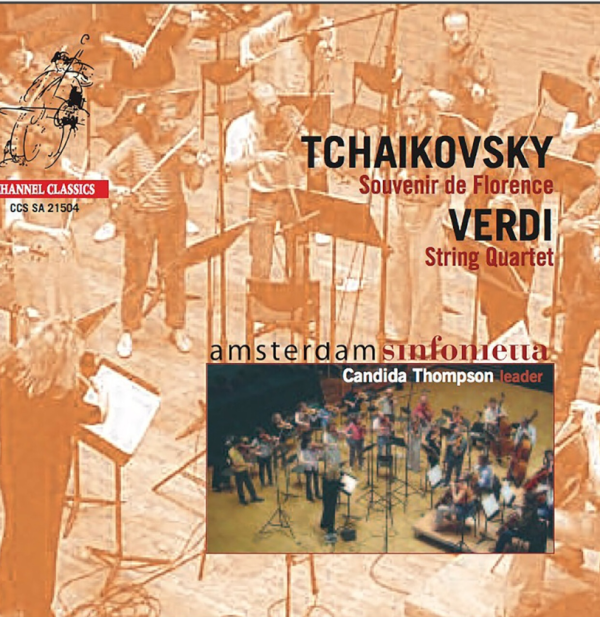
Tchaikovsky being a Slavic composer penetrates a bit more deeply into your soul with his melodies. The second slow movement titled Adagio Cantabile e con moto, which in Italian means to be played very slowly in a singing style. His melody here is so searching that it makes your heart stop: Tchaikovsky seems to be asking here what is the meaning of life? The piece is vintage Tchaikovsky whose music is the heart and soul of orchestras worldwide. His ballets are the lifeblood of every ballet company. Swan Lake is the ballet that makes or breaks a great ballerina. Despite coming from a country that is frozen far below zero for a big part of the year, his music has an incredible warmth that’s startling. Unlike Sibelius, whose moody tone poems reflect the bleak Scandinavian landscapes, Tchaikovsky refused to let the bleakness of Russian winters into his soaring melodies.
Gorgeous music played well and recorded well. What more could you ask for?

We now move from melodic Dvorak and Tchaikovsky to the brooding music of Sibelius. We are listening to a performance by the Lahti orchestra who play in Sibelius Hall conducted by Okko Kamu. These musicians have the music of Sibelius in their blood. These recording is from BIS that has made many fine recordings of Sibelius’ music featuring conductors like Neeme Jarvi.
This piece called The Tempest, after the play by Shakespeare, is vintage Sibelius. It’s not melodic but snatches of melody show up here and there like isolated flowers in a pasture of brown foliage in winter. The orchestra sounds lean compared to the lush German orchestras. That’s by design. Sibelius liked his orchestras lean. He wrote music that was devoid of florid lush melody. The biting brass indicates the beginning of the storm in The Tempest. Sibelius liked his brass. They play a prominent role in all his symphonies.
The recording is Redbook 44.1khz. BIS originally used very simple gear like the original Sony PCM F1 recorder and later even Fostex DAT machines. The founder Richard von Bahr liked Neumann tube microphones fed straight into Revox B77 open reel tape in his original analog recordings. This recording suits the play and the music. Recall that Shakespeare wrote The Tempest in 1610, more than 400 years ago! The play features a shipwreck and it is set in a lonely island where the wizard Prospero lives with his daughter Miranda and two servants: Caliban, a savage monster and Ariel, a spirit. The play features revenge, betrayal and magic. It’s not surprising why Sibelius was attracted to setting music for The Tempest.
This is not an audiophile recording but it’s true to the composer’s wishes.

This piece called The Tempest, after the play by Shakespeare, is vintage Sibelius. It’s not melodic but snatches of melody show up here and there like isolated flowers in a pasture of brown foliage in winter. The orchestra sounds lean compared to the lush German orchestras. That’s by design. Sibelius liked his orchestras lean. He wrote music that was devoid of florid lush melody. The biting brass indicates the beginning of the storm in The Tempest. Sibelius liked his brass. They play a prominent role in all his symphonies.
The recording is Redbook 44.1khz. BIS originally used very simple gear like the original Sony PCM F1 recorder and later even Fostex DAT machines. The founder Richard von Bahr liked Neumann tube microphones fed straight into Revox B77 open reel tape in his original analog recordings. This recording suits the play and the music. Recall that Shakespeare wrote The Tempest in 1610, more than 400 years ago! The play features a shipwreck and it is set in a lonely island where the wizard Prospero lives with his daughter Miranda and two servants: Caliban, a savage monster and Ariel, a spirit. The play features revenge, betrayal and magic. It’s not surprising why Sibelius was attracted to setting music for The Tempest.
This is not an audiophile recording but it’s true to the composer’s wishes.

We are continuing our Scandinavian musical excursion listening to Dag Wiren’s Serenade for Strings conducted by the maestro Esa-Pekka Salonen with the Stockholm Sinfonietta. It was a real tragedy for the Bay Area when Esa-Pekka Salonen announced he was leaving his position with the San Francisco Symphony. We are home to several multi-trillion companies but lack the resources to even support one great symphony orchestra. That’s the Bay Area for you. Full of billionaires with no musical or artistic sensibilities.
This recording has BIS’ famous byline “A BIS Original Dynamics Recording”. They’re not kidding! The dynamics of this recording will have you jump out of your listening chair. Startling shifts in volume occur with almost breathtaking speed. It’s abazing to see how compressed most modern recordings are compared to this older 30-year Redbook recording. The music is Scandinavian. Dag Wiren was a Swedish composer who spent his formative youth in Paris with Stravinsky before returning to Sweden. He wrote his Serenade in 1937. It’s his most popular work. It’s played brilliantly here. Lars Erik-Larsson, another Swedish composer, wrote his Little Serenade in 1934. It’s not as great a piece as the one by Dag Wiren.
It will be a sad day when Esa-Pekka Salonen packs his bags and leaves the San Francisco Symphony. We’ve had great conductors but given the precipitous decline in the city’s social standing, I doubt we’ll get another great conductor. We have ChatGPT but no artistic institutions that are worthy in the eyes of our hundreds of billionaires. What a sad story the Bay Area has become.
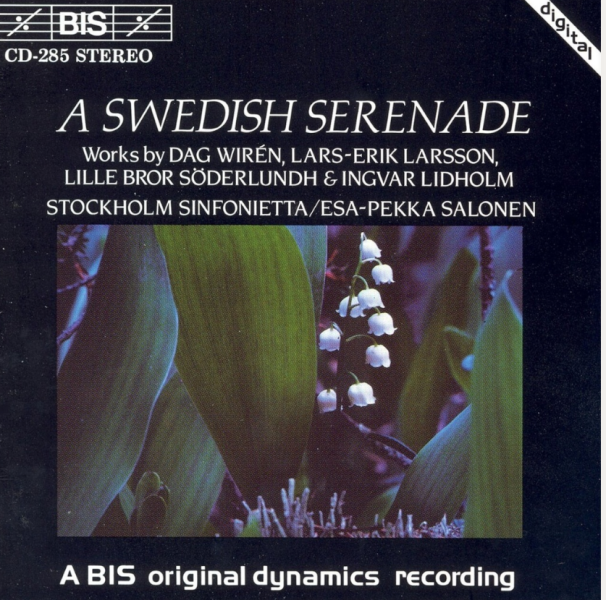
This recording has BIS’ famous byline “A BIS Original Dynamics Recording”. They’re not kidding! The dynamics of this recording will have you jump out of your listening chair. Startling shifts in volume occur with almost breathtaking speed. It’s abazing to see how compressed most modern recordings are compared to this older 30-year Redbook recording. The music is Scandinavian. Dag Wiren was a Swedish composer who spent his formative youth in Paris with Stravinsky before returning to Sweden. He wrote his Serenade in 1937. It’s his most popular work. It’s played brilliantly here. Lars Erik-Larsson, another Swedish composer, wrote his Little Serenade in 1934. It’s not as great a piece as the one by Dag Wiren.
It will be a sad day when Esa-Pekka Salonen packs his bags and leaves the San Francisco Symphony. We’ve had great conductors but given the precipitous decline in the city’s social standing, I doubt we’ll get another great conductor. We have ChatGPT but no artistic institutions that are worthy in the eyes of our hundreds of billionaires. What a sad story the Bay Area has become.

We now turn to the other great Scandinavian master of melody, Edvard Grieg. His famous Peer Gynt is full of breathtaking melodies. Here we are listening to his Holberg Suite (“From Holberg’s Time”), courtesy of the Orpheus Chamber Orchestra, a leaderless ensemble, recorded on DG. Grieg wrote this beautiful serenade in 1884 to celebrate the 200th year anniversary of Norwegian humanist playwright Ludvig Holberg. It’s set in an ancient dance style with movements labeled Sarabande, a Renaissance dance movement. Grieg beautifully captures the spirit of Renaissance dance style in more modern music. It reminds me of Otto Respighi’s famous piece Ancient Airs and Dances, whose Mercury Living Presence recording was on Harry Pearson’s Super Disc List in The Absolute Sound.
Grieg’s music was lyrical without becoming broody like Sibelius. He like Tchaikovsky refused to let the bleak winter landscapes drag him down. His music has a sunny disposition. His famous Lyric Pieces for piano are miniature gems in the piano repertoire. This Holberg Suite is vintage Greg. Beautiful melody and a touch of Scandinavian mystique about it, enough to give you that vibe of Norway and their Viking spirits. Great recording and it sounds splendid on the big SL’s.
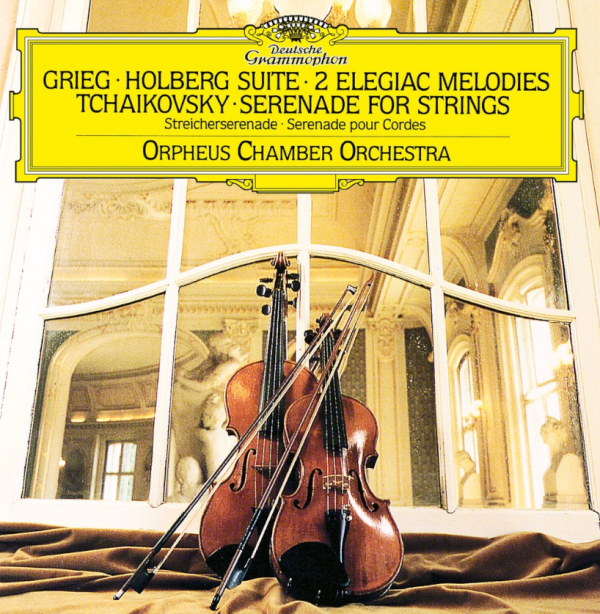
Grieg’s music was lyrical without becoming broody like Sibelius. He like Tchaikovsky refused to let the bleak winter landscapes drag him down. His music has a sunny disposition. His famous Lyric Pieces for piano are miniature gems in the piano repertoire. This Holberg Suite is vintage Greg. Beautiful melody and a touch of Scandinavian mystique about it, enough to give you that vibe of Norway and their Viking spirits. Great recording and it sounds splendid on the big SL’s.

We are listening to Chopin’s Nocturnes. He wrote 21 in his short life between 1810-1841. They are a running commentary on his life. Bruno Rigutto plays on this high res 88.2 khz recording and definitely has a lot to say about playing the piano and Chopin in particular. He writes in the liner notes:

Interesting perspective that could be applied to high end audio. Imagine talking to your system at the beginning of each evening like this. It’s a closely miked recording but sounds really nice on my Quad 2905 using the Mola Mola electronics. Chopin’s music is of course sublime. It’s remarkable how he managed to extract so much meaning and emotion from a keyboard instrument. A desert island disc.


Interesting perspective that could be applied to high end audio. Imagine talking to your system at the beginning of each evening like this. It’s a closely miked recording but sounds really nice on my Quad 2905 using the Mola Mola electronics. Chopin’s music is of course sublime. It’s remarkable how he managed to extract so much meaning and emotion from a keyboard instrument. A desert island disc.

Similar threads
- Replies
- 63
- Views
- 3K
- Replies
- 118
- Views
- 71K
| Steve Williams Site Founder | Site Owner | Administrator | Ron Resnick Site Owner | Administrator | Julian (The Fixer) Website Build | Marketing Managersing |
















